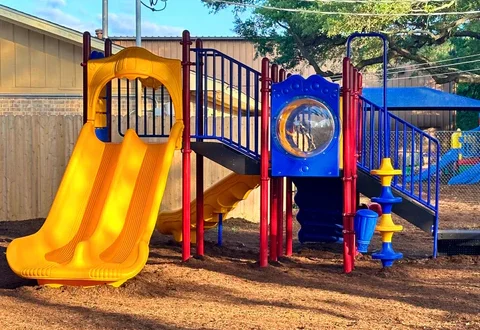Introduction: Nutrition and Child Care: What Matters
In the early years of life, children grow quickly, not only in size but also in terms of brain development, learning abilities, and behaviour. Nutrition is one of the best tools for supporting this growth. A healthy diet can help build strong bodies and sharp minds. It also helps to develop good habits for a lifetime.
Nutrition is not just about snacks and meals in childcare settings. It’s also an opportunity to teach children about culture, health, variety and the joy of eating.
1. Science of Nutrition for the Early Years
Between birth and age 5, the brain and body of children undergo rapid growth. During this time, nutrition can:
- Enhance Cognitive Development (Memory, Attention, Language)
- Strengthening the Immune System
- Enhance mood and behaviour
- Reduce the risk for obesity and diabetes.
The brain of a child uses up to half of the daily calories in their first few years!
2. What does a balanced diet look like for young children?
To stay healthy, energized and focused, children need to consume a variety of nutrients each day. A balanced meal includes:
Daily Nutritional Basics
- Fruits and vegetables– for vitamins and minerals, fibre
- Whole Grains for energy and digestion
- protein– derived from meat, fish or eggs, beans, dairy products, tofu and/or dairy
- Healthy fats from avocados, almonds (age appropriate), olive oil
- Calcium-rich foods– for growing bone (milk, yoghurt and cheese)
Limit:
- Sugary drinks
- Snacks that are heavily processed or fried
- Foods high in sodium, such as instant noodles and chips
- Sugar in desserts and cereals is too much
The portion sizes for toddlers should be smaller and more age-appropriate. They need less food but more frequently.
3. Sample Meal Plans for Preschool Children (Ages 3 to 5)
MealExample
Breakfast: Whole-grain cereal, milk, banana slices, and an egg
Morning Snack Apple slices with peanut butter (if it is allergy-safe).
Lunch: Brown rice with grilled chicken strips and broccoli
Afternoon Snack: A small smoothie or cheese cubes on whole wheat crackers
Dinner Dessert: Fruit, lentil soup with lentils, mashed potatoes and peas.
Juice should not exceed 1/2 cup per person per day (100 per cent fruit juice).
4. Making Healthy Eating Fun in Child Care Settings
When meals are interactive, enjoyable and regular, children are more likely to enjoy them.
Enjoyable, healthy eating ideas:
- Colorize food: bright vegetables and fruits in rainbow arrangements
- Use child-sized plates and utensils
- Let kids help by letting them wash vegetables or stir ingredients
- Use shapes to serve your food: Use cookie cutters for fruits, cheeses, and sandwiches.
- Create themed meal days, such as “Taco Tuesday,” Fruit Friday,” or “Build your own Bowl.”
Avoid using food to bribe people or punish them. This can lead later on in life to emotional eating.
5. Addressing Picky Eaters
It is not uncommon for toddlers to be picky eaters. It is often a phase but can be stressful.
Useful Strategies
- Serve with familiar favourites
- Children will ask for more if you offer them small portions.
- Stay calm and consistent.
- Make meals predictable and enjoyable.
- Be a model – kids mimic adult food choices.
Expose your child to the same foods 8-10 times until they decide that they “don’t like” them.
6. Food Safety in Child Care
It is important to choose the right food as well as keep it safe.
Safety Tips
- Hands should always be washed before handling food
- Perishables should be stored in the fridge below 40 degrees F.
- Separate cutting boards are needed for vegetables and meat.
- Heat leftovers to the proper temperature
- Check food expiration dates
Make sure that your staff is aware of any food allergies or dietary restrictions.
7. Celebrate cultural diversity through food
Childcare can be a great place to celebrate international traditions by sharing meals.
- Introduce different foods (rice dishes from other cultures, lentils and dumplings),
- Discuss how families eat together around the globe
- Celebrate holidays with cultural dishes
- Share your favourite recipes or stories with the family
It promotes curiosity, respect and inclusion at a young age.
8. Simple ways to teach nutrition
Children are naturally curious. Take advantage of this!
Learn Activities
- Browse through books such as “The Very Hungry Capillar” or “Good Enough to Eat”.
- Sort food (fruits and vegetables, healthy foods vs. sweets)
- Sing “Apples and Bananas”.
- Model cooking and shopping using a pretend kitchen
- Visit a garden or farmer’s market
9. Encourage parents to eat healthily
Children form habits that last by maintaining consistency between the home and the child care.
How to collaborate:
- Weekly meal plan with parents
- Send healthy snack or recipe ideas to your family
- Host a “nutrition evening” or tasting event
- Lunchboxes: Tips for packing
- Openly and positively discuss picky eating or food allergies
Feeding with Purpose and Love
In child care, nutrition is more than just a full stomach. It’s all about laying the foundation for a lifetime of health, education, and emotional well-being. Parents and caregivers can raise healthy eaters by offering balanced meals and making food fun.





